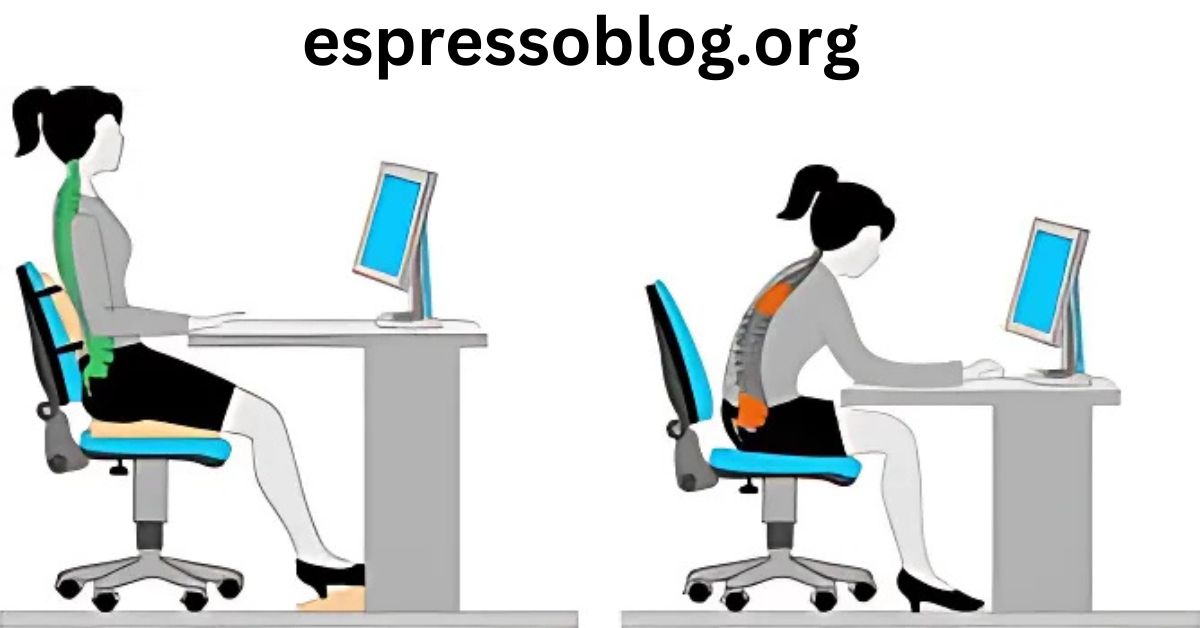Display screen equipment (DSE) surrounds us at work, from monitors to tablets and laptops. For many, screens are the core of their daily tasks. But despite how common screens are, misconceptions can lead to confusion and bad habits, affecting both health and productivity.
Let’s break down 10 of the biggest myths surrounding DSE to help everyone develop healthier screen habits.
Myth 1: “Screen Time Always Leads to Eye Damage”
Many believe that too much screen time ruins eyesight permanently. But it turns out that’s a myth. Long screen sessions may cause temporary discomfort, like dry eyes, but there’s no solid evidence linking screen use directly to permanent eye damage. Digital eye strain is real, but it’s temporary. Adjustments like blinking often, using proper lighting and the “20×3 rule” (look away every 20 minutes at something which is 20 feet away for 20 seconds) can help. So, while screens can tire the eyes, they don’t damage them for good.
Myth 2: “Blue Light from Screens Causes Blindness”
Blue light has been the talk that many people think causes blindness, but that’s a myth, too. Exposure to blue light can cause eyes to go dry and cause eye fatigue, especially after long hours on a screen, but it won’t make you go blind. Some studies even suggest blue light exposure is about one-tenth of what we get from the sun. Blue light-blocking glasses or screen filters can help reduce strain, but the best way to deal with blue light is to take regular breaks and avoid screens close to bedtime.
Myth 3: “DSE Use Doesn’t Affect Sleep Patterns”
Screens are often the last thing people see before bed. But the myth that screens don’t impact sleep is false. Blue light delays melatonin production, making it harder to fall asleep. Using screens right before bed can mess with natural sleep patterns, making people feel restless. Reducing screen time for at least an hour before bed can help reset the body’s internal clock, promoting better sleep.
Myth 4: “Sitting at a Desk is Less Risky Than Physical Labor”
Sitting all day may seem manageable compared to manual labour, but prolonged sitting brings health risks. Staying seated for hours can lead to musculoskeletal issues like back pain and poor circulation. The risk is even higher if the desk and chair aren’t ergonomically set up. Experts recommend adjusting workstations to avoid these issues, which means everything from screen height to desk layout matters. Desk work isn’t “safe” just because it’s stationary. Movement and good posture are essential.
Myth 5: “Laptop Use Is the Same as Using a Desktop Computer”
It’s easy to think laptops and desktops are the same. Laptops were introduced for portability, not extended use. Their screens and keyboards are attached, meaning users often hunch over, which strains the neck, shoulders and wrists. Desktops, however, offer more flexibility for positioning. If laptops are used for hours at a time, it’s wise to invest in an external keyboard, mouse or even a laptop stand. This can make a world of difference in comfort and posture.
Myth 6: “Posture Doesn’t Matter if You’re Comfortable”
“Comfort is key” may be a good motto, but when it comes to DSE, comfort alone isn’t enough. People can feel comfortable even in poor postures that, over time, lead to long-term problems like back and neck pain. Ergonomically correct posture—sitting with feet flat, elbows at a right angle and a straight back—is key. Just because it feels good at the moment doesn’t mean it won’t cause pain later on.
Myth 7: “Breaks Aren’t Necessary if You’re Comfortable”
Some believe that if they feel comfortable, breaks aren’t needed. But even when relaxed, muscles, eyes and minds benefit from periodic breaks. These breaks can reduce eye strain, prevent muscle fatigue and refresh focus. What is the best way to balance work and breaks? Try micro-breaks every 20-30 minutes, or take a short walk. These mini-breaks are surprisingly effective for staying alert and productive, no matter how comfortable the workstation feels.
Myth 8: “Adjustable Chairs Are Enough for Good Ergonomics”
An adjustable chair is a great start, but it’s not the only piece of the ergonomic puzzle. Good ergonomics go beyond a fancy chair; they involve desk height, screen placement, keyboard positioning and even foot support. Without a well-rounded setup, an adjustable chair can only do so much. A proper ergonomic arrangement ensures everything fits the user’s natural posture, reducing strain and discomfort.
Myth 9: “You Only Need DSE Training if You Have a Desk Job”
DSE training is often associated with desk jobs, but many roles today involve some form of screen use. From healthcare professionals to retail workers, online DSE training benefits anyone using screens. This digital format offers convenient, flexible access to essential ergonomics and screen-safety tips, helping employees build healthier screen habits and work more comfortably wherever they are.
Myth 10: “Screen Use Causes Permanent Digital Eye Strain”
Digital eye strain is genuine, but the effects are usually temporary. Screens can cause blurry vision, dryness and discomfort, but these symptoms often go away after a break. Good screen habits, like blinking more, taking breaks and adjusting screen brightness, help reduce eye strain. The idea that screens cause “permanent” eye strain isn’t backed by science. Most discomfort clears up with proper screen habits, so while screen use can cause eye strain, it doesn’t have to be permanent.
Conclusion
Knowing the facts about DSE use helps create healthier, more productive work environments. Dispelling myths allows employees and employers alike to focus on practical, effective solutions—whether it’s better ergonomics, taking regular breaks or adjusting lighting.

